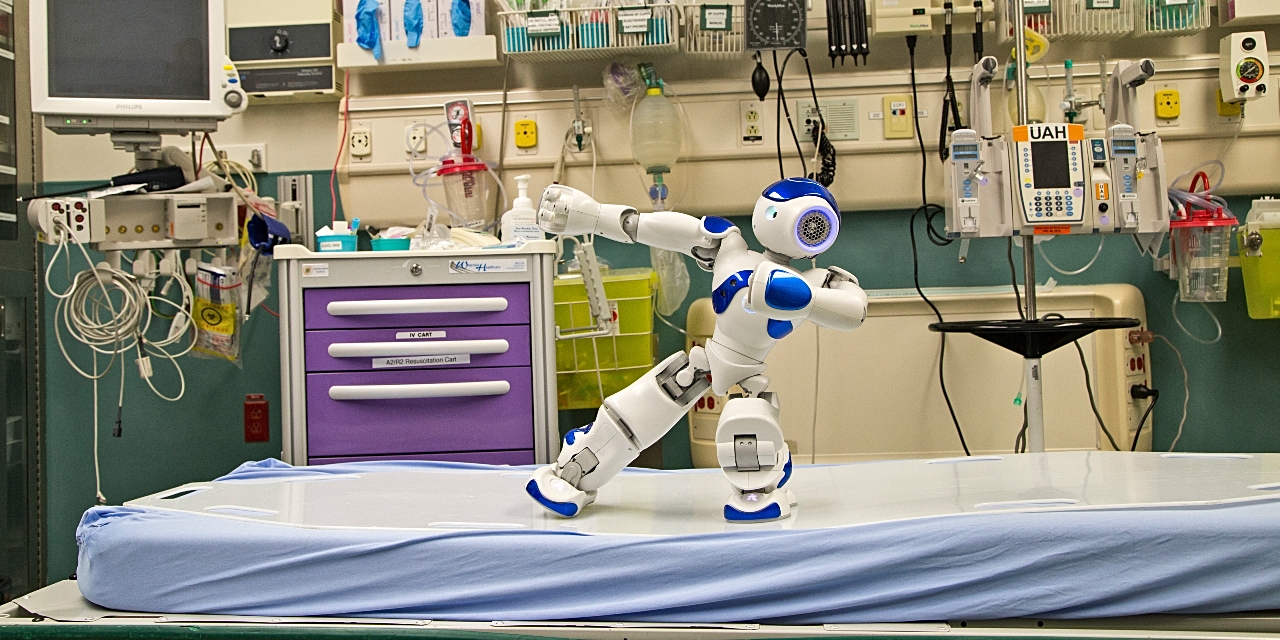A new research collaboration between researchers at the University of Alberta and the University of Glasgow is exploring whether interaction with an AI-enhanced, socially intelligent robot can effectively distract children during painful clinical procedures, reducing their pain and distress.
"Pain is much more than just a physical response; we also want to manage a child's stress, anxiety and distress," said U of A medical researcher and pediatric emergency physician Samina Ali. "We want to know if integrating a robot into the clinical setting can create a more positive, meaningful and less traumatic experience for children and their families."
The three-year project builds on a series of smaller studies, supported by funding from the Stollery Children's Hospital Foundation, that used programmable humanoid robots named MEDi to deliver cognitive behavioural therapy-based interventions to children as they went through procedures involving needles. In those studies, the MEDi robot was remotely operated and followed a limited script. In Ali and the University of Glasgow's Mary Ellen Foster's project, the team is proposing using artificial intelligence to develop a responsive and adaptive robot.
"In our earlier studies with the robots, you could just see the whole mood in the room change-not only with the children, but with the parents too," said Ali, who is also a member of the Women and Children's Health Research Institute.
"When we measured parental anxiety pre- and post-procedure, the parents whose children had interacted with the robots had significantly less anxiety. So that was a very positive byproduct."
Some of the proposed programming for the robots includes the ability to detect a child's state of mind and adapt their behaviour to distract attention away from procedures, such as by talking, singing, dancing or telling stories.
The robots' performance will be evaluated through a clinical trial in two Canadian hospitals during the final year of the project, Ali said.
"Our approach is to co-design the programming, so we're going to interview children, parents and health-care providers to find out what they would be looking for in a tool like this," she said. "Then our team's engineers will design the software and we'll bring it back to children in the health-care settings for usability testing."
The results could lead to applications outside of emergency settings, including any situation where parents or health-care providers are delivering potentially painful treatments to children.
"Ultimately, I want to add as many tools as I can to the caregiver toolbox to minimize children's pain and distress," Ali said. "I think that's the obligation of any health-care provider-to do everything we can to make it a more positive experience for everyone, particularly in a country with such high resources as Canada."
Canada-UK Artificial Intelligence Initiative
Ali and Foster's project was recently awarded funding from the Canada-UK Artificial Intelligence Initiative, a joint venture between Canada's three federal research funding agencies-the Canadian Institutes of Health Research, Natural Sciences and Engineering Research Council and Social Sciences and Humanities Research Council-and four U.K. research councils: the Arts and Humanities Research Council, Economic and Social Research Council, Engineering and Physical Sciences Research Council and Medical Research Council.
In February, the initiative announced funding of approximately C$5 million and £5 million over three years for 10 interdisciplinary, international AI research teams. Along with Ali's project, two other U of A projects received funding.
